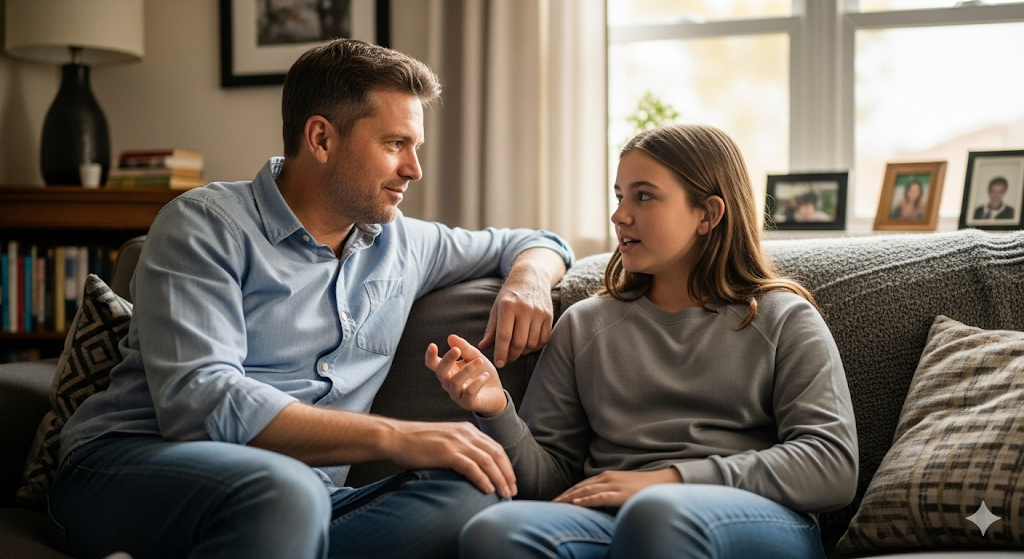Every relationship reaches moments when love and frustration collide. Maybe your partner forgot something important. Maybe they snapped at you after a long day. Maybe you’re carrying stress from work, parenting, or finances, and the smallest conflict feels huge.
Feeling upset with your partner is completely normal. What matters most is how you handle that moment—because emotional reactions can either deepen connection or quietly erode it.
This guide uses the 5-step LOWER method from ThatsFrustrating.com to help you stay kind, protect the relationship, and move from emotional tension to real understanding.
Why It’s So Hard to Stay Kind When You’re Upset
Frustration happens when there is a gap between what you expected and what actually happened.
In relationships, this gap feels personal:
- You expected support but got silence.
- You expected partnership but felt alone.
- You expected warmth but received distance.
When expectations collide with reality, emotions rise fast. Kindness becomes harder because your nervous system shifts into self-protection mode, even if the “threat” is someone you love.
That’s where LOWER helps.
The 5-Step LOWER Method for Kindness During Conflict
L – Label the Feeling
Use the phrase: “That’s frustrating when…”
Labeling is one of the kindest emotional skills you can bring into a relationship conflict.
When you label the emotion, you’re doing two things at once:
- You acknowledge what you’re feeling without blaming your partner.
- You create a gentle doorway into the conversation instead of a verbal attack.
Most arguments escalate because we lead with accusation:
- “You always do this.”
- “You don’t care.”
- “Why would you even say that?”
- “You never think about me.”
Accusations put the other person in a defensive emotional corner. They react to the tone—not the actual issue.
Labeling does the opposite.
It slows down the moment, reduces emotional heat, and communicates the experience rather than an attack.
Examples:
- “That’s frustrating when I’m talking and I don’t feel heard.”
- “That’s frustrating when plans change suddenly without a heads-up.”
- “That’s frustrating when we misread each other.”
This phrasing is powerful because it:
- Separates the feeling from the person.
- Describes the experience instead of assigning blame.
- Signals a desire to understand, not fight.
From a scientific perspective, affect labeling (i.e., naming the emotion) has been shown to help regulate emotional responses, reduce distress, and improve interpersonal outcomes.
Labeling is essentially saying:
“I’m having a feeling. I want to talk about it safely.”
That’s kindness in action.
O – Own Your Experience
Use the phrase: “I feel frustrated when…”
Owning your emotions is another profound act of kindness in relationships.
Instead of projecting the emotion outward—by attacking or criticizing—you turn inward long enough to understand your part in the experience. This prevents the blame-shame cycle that destroys communication.
Most people instinctively defend themselves when attacked. Owning stops that dynamic before it starts.
Instead of saying:
- “You make me so angry.”
- “You’re impossible.”
- “You never listen.”
You shift the structure to:
- “I feel frustrated when I don’t feel heard.”
- “I feel disconnected when conversations get rushed.”
- “I feel overwhelmed when we jump into problem-solving before we’ve connected.”
This shift is incredibly kind, because:
1. It keeps the focus on your internal experience.
Your partner doesn’t feel accused—they feel informed.
2. It gives the other person emotional clarity instead of emotional pressure.
They hear what matters to you, not what’s supposedly “wrong” with them.
3. It builds emotional safety.
When you own your feelings, your partner doesn’t have to defend themselves—they can listen.
4. It makes solving the problem easier.
People are naturally more willing to help when they don’t feel blamed.
Communicating with “I” statements (also called I-messages) is widely recommended in relationship and therapeutic contexts, because it lowers defensiveness and fosters openness.
Owning is essentially saying:
“I’m sharing this because I want us to understand each other, not hurt each other.”
This is the emotional difference between connection and conflict, and it sets the tone for every step that follows in the LOWER method.
W – Wait (Pause Before Reacting)
This step protects you from saying something you don’t mean.
Before responding:
- Take a slow breath.
- Step into a different room.
- Tell your partner, “I need a moment to think so I don’t say the wrong thing.”
Waiting gives your brain time to settle. Kindness almost always returns after even a few minutes of space.
E – Explore Your Options (4 Helpful Ways to Respond with Kindness)
Exploration is where frustration turns into connection. Try these four approaches:
1. Explore Their Perspective
Ask gently:
- “Can you help me understand what you were feeling earlier?”
- “What was going on for you in that moment?”
Often the conflict softens when you see their stress, fear, or exhaustion.
2. Reset the Tone
Kindness can restart the moment:
- “Can we try that conversation again but slower?”
- “I want us to talk about this without hurting each other.”
A reset instantly lowers frustration.
3. Share Needs Instead of Criticisms
Instead of:
- “You never listen.”
Try:
- “I need to feel heard when we talk.”
Needs build bridges. Criticisms build walls.
4. Use Warm Body Language
Kindness isn’t just words. Try:
- Softening your voice.
- Uncrossing your arms.
- Sitting next to them rather than across from them.
The body often calms the heart before the mind does.
R – Resolve the Situation Together
Resolution isn’t about “winning”—it’s about restoring connection.
You can say:
- “Here’s what would help next time.”
- “How do we want to handle this if it comes up again?”
- “Thank you for talking this through with me.”
Resolution creates trust because it shows the relationship matters more than the frustration.
Practical Example: A Realistic Relationship Scenario
Situation:
Your partner came home late without texting.
Label:
“That’s frustrating when I don’t hear from you for hours.”
Own:
“I feel frustrated when I’m unsure if you’re okay.”
Wait:
You pause for ten minutes instead of firing off a tense comment.
Explore:
- Ask: “Were you stuck in something unexpected?”
- Reset: “Can we talk about this calmly?”
- Need: “I need a quick check-in when timing changes.”
- Body language: You loosen your shoulders, soften your voice.
Resolve:
Together, you agree to send a simple text next time plans shift.
This is how emotional friction becomes emotional partnership.
FAQs
1. Why is it hard to stay kind when I’m upset with my partner?
Because frustration triggers a stress response that puts you in protective mode. LOWER helps redirect that reaction into compassion.
2. What if my partner doesn’t respond kindly back?
Kindness is powerful, but both partners have to participate. LOWER keeps you grounded even if they’re not there yet.
3. How do I avoid saying something hurtful in the moment?
Use the Wait step. Even 30–60 seconds helps regulate your emotions.
4. Can LOWER work if we argue often?
Yes. It creates emotional predictability, safety, and structure—especially helpful in recurring arguments.
Related Article on ThatsFrustrating.com
Closing Thoughts
Kindness during conflict isn’t about suppressing your emotions – it’s about channeling them constructively.
When you apply the LOWER method:
- You protect your partner.
- You protect your connection.
- You protect your own emotional wellbeing.
Frustration will happen. But with the right tools, it doesn’t have to damage the relationship. LOWER helps you stay calm, stay kind, and stay connected – even in the hardest moments.





Leave a Reply